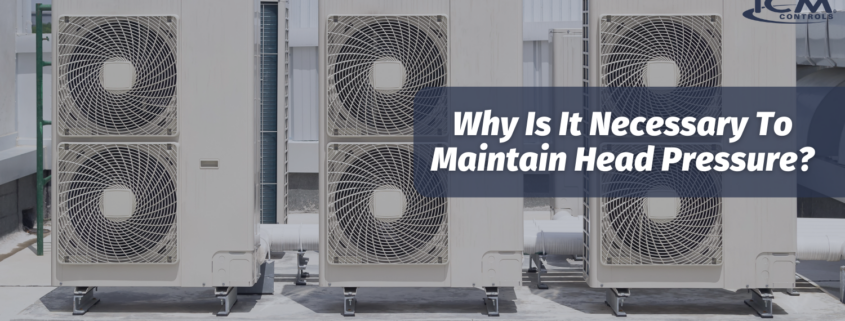“Head pressure” refers to the pressure of the refrigerant in the condenser coil of the system. This pressure is also known as “high-side pressure” and is one of the two main pressure measurements in a refrigeration cycle, the other being “low-side pressure” or “suction pressure.”
Head pressure is essential to the proper operation of your HVAC system because it helps maintain the refrigerant in a liquid state. If the head pressure is too low, it can indicate problems like insufficient airflow or refrigerant charge, which can lead to poor cooling efficiency. Conversely, if the head pressure is too high, it can mean issues such as a dirty condenser coil or an overcharge of refrigerant.
HVAC systems are designed with pressure-regulating devices like expansion valves and metering devices to control refrigerant flow and maintain proper pressure levels in both the high and low sides of the system.
Here’s how head pressure works in an HVAC system:
The HVAC system’s compressor plays a crucial role in the refrigeration cycle. It compresses the low-pressure, low-temperature refrigerant vapor from the evaporator coil and raises its temperature and pressure.
After leaving the compressor, the high-pressure, high-temperature refrigerant flows into the condenser coil. This coil is typically located outside the home or building or in a separate unit. The condenser coil dissipates heat from the refrigerant to the surrounding air, causing the refrigerant to condense into a high-pressure liquid.
Normal head pressure for an HVAC system is approximately 58-80 psi. Technicians use pressure gauges and other diagnostic tools to assess and adjust head pressure as needed during system maintenance or troubleshooting. Proper head pressure ensures the refrigerant cycle operates efficiently, transferring heat effectively and providing the desired heating or cooling to the indoor space.
Maintaining proper head pressure ensures:
- Proper Refrigerant Flow: Without sufficient head pressure, the refrigerant may not flow as intended, leading to reduced cooling or heating capacity.
- Temperature Control: Head pressure is directly related to the temperature at which the refrigerant condenses into a liquid state. Maintaining the correct head pressure is crucial for achieving the desired temperature control in the HVAC system. The refrigerant may not condense properly ff the head pressure is too low, leading to insufficient cooling or heating.
- The Compressor is Protected: The compressor is a critical component of an HVAC system. Maintaining adequate head pressure helps protect the compressor from overheating and damage. If the head pressure drops too low, the compressor may struggle to compress the refrigerant, leading to potential damage and reduced lifespan.
- System Efficiency: Properly maintaining head pressure ensures that the HVAC system operates at its designed efficiency. When head pressure is within the recommended range, the system can achieve its rated capacity with less energy consumption. This results in lower operating costs and a more environmentally friendly operation. However, when head pressure gets too high, the electric motors must work harder to maintain that pressure. Higher head pressure in the compressor uses more electricity. This is one reason high head pressure can cause higher than normal cooling bills in the summer.
- Refrigerant Issues are Avoided: Low head pressure can lead to refrigerant issues such as refrigerant migration, which occurs when the refrigerant moves to parts of the system where it shouldn’t be, potentially causing problems like oil fouling or reduced heat exchange efficiency.
- Prevents Icing: Maintaining the correct head pressure in cooling systems helps prevent evaporator coil icing. If the pressure is too low, the evaporator coil temperature can drop excessively, causing moisture in the air to freeze on the coil. This reduces airflow and system efficiency.
HVAC systems typically include components like expansion valves, pressure regulators, and fans that work together to control the flow and pressure of the refrigerant and maintain proper head pressure. Proper system design, installation, and regular maintenance are crucial for ensuring that head pressure remains within the specified range for optimal HVAC system performance.
ICM325A is a Universal Head Pressure Control that consolidates all existing single-phase head pressure controls into one control via a universal 120-600VAC line voltage and 24-240VAC control voltage. More impressively, users can setup and adjust the parameters of the device wirelessly via NFC technology (phone tapping) and the ICM Omni App.
Using ICM’s head pressure controls, you can keep your HVAC system’s pressure from dropping too low, which can stop your evaporator from freezing over or cause your compressor to overflow with fluids. They prevent overshoots and control circuits through functions like hard starters, cutoffs, and bypass. Get your samples by ordering it on Sample & Literature Request page on ICM Website.










